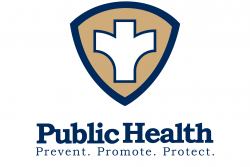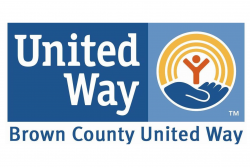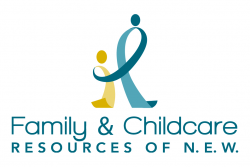The data visualized above is nuanced across communities, and some data is missing. Data may be lagged and not yet available, and some data may not exist. Data from different institutions may be incomplete, and years may be skipped for a variety of reasons. Where available, we will add details on why there may be gaps. You can see more breakdowns of data by clicking the outcome area buttons below the date dashboard.
Brown County and Wisconsin Comparisons
Brown County at a Glance
Brown County has a diverse and growing community of amazing youth. We believe that to best serve our youth, we need to first understand who makes up our community. Below are some demographic data sets about the youth in our schools, including students who are economically disadvantaged, have a disability, and data about English learners. These are more than just numbers. They are insights into the makeup of our community that inform how we work to achieve our goals.
Brown County Census Data Map
Community Information System
Students with Disabilities
Youth Outcomes Data
our outcome areas. Data is at the core of our work to get better, more equitable outcomes for young people. We use data to illuminate problems and solutions, tackle tough conversations and understand impact to take action. We collect data on key outcomes along the path to economic mobility, from kindergarten readiness to employment. We can sort our data by race, ethnicity, gender, income, language and special education status. Achieve Brown County partners with local schools, nonprofits, and institutions as well as state agencies to receive and analyze Brown County data around these significant milestones. Explore specific outcome area data by [...]
The data visualized above is nuanced across communities, and some data is missing. Data may be lagged and not yet available, and some data may not exist. Data from different institutions may be incomplete, and years may be skipped for a variety of reasons. Where available, we will add details on why there may be gaps. You can see more breakdowns of data by clicking the outcome area buttons below the date dashboard.
Civic Engagement
Civic Engagement
Early Grade Reading
Early Grade Reading Goal: every child can read at a proficient level by third grade. Impact on economic mobility and equity: Reading proficiency during third grade impacts whether a student will graduate high school on time. Students not proficient in reading by the end of third grade are four times more likely to drop out of high school. Of all students who are not reading proficiently in third grade, Black and Latine children are two times more likely than white children to not graduate from high school. Factors and systems indicators: • Attendance • Social-emotional learning and curriculum • Out-of-school-time [...]
Employment
Employment Every Young Adult is Engaged in the Workforce Impact on economic mobility and equity: The Urban Institute defines economic success as an individual having adequate income and assets to support their and their family’s material well-being. People of color are less likely than all other workers to earn a living wage. Women of color, particularly Black women, face a “double gap” from the gender wage gap and the racial wage gap. Factors and systems indicators: • Academic achievement • Juvenile arrests • Internship and mentorship opportunities
High School Graduation
High School Graduation Every Child Succeeds in School Impact on economic mobility and equity: High school completion can lead to employment or opportunities to extend education to receive higher paying jobs. Individuals who complete high school earn about 23% more in weekly salaries than those who do not. Graduation rates for Indigenous, Black and Latine public high school students are below the U.S. average. Factors and systems indicators: • Culturally responsive curriculum • Sense of belonging • School mental health supports
Kindergarten Readiness
Kindergarten Readiness Every Child is Prepared for School Impact on economic mobility and equity: Investment in and accessibility to preschool leads to greater student retention through graduation and decreases school reliance on special education programs for remediation.3 The biggest impact of kindergarten readiness is that children are socially and emotionally ready for school. Children who come from higher economic status tend to score higher on kindergarten readiness assessments, and Black and Latine children tend to score lower on kindergarten readiness than non-Latine white children. Factors and systems indicators: • Preschool enrollment and attendance • Access to early developmental screening • [...]
Middle Grade Math
Middle Grade Math Every Child is Proficient at 8th Grade Math Impact on economic mobility and equity: Math achievement on tests in eighth, 10th and 12th grade are a good predictor of whether students will stay on course to attend a two- or four year college. The level of academic achievement students attain by eighth grade has a larger impact than high school academic achievement on their college and career readiness. Racial disparities exist in the gap between an individual’s goals and actual postsecondary outcomes. Factors and systems indicators: • Kindergarten numeracy • Teacher qualifications • Mathematical self-concept
Post Secondary Completion
Post Secondary Completion Every Youth Attains Post Secondary Education or Career Training Impact on economic mobility and equity: Parental income and college completion are the most prominent factors in determining upward economic mobility. The majority of those who complete college from the lowest parental income quintiles achieve upward mobility within a few years of degree completion. Students of color are more likely to persist in postsecondary education than white students but are less likely to attain a degree within six years of initial enrollment. Factors and systems indicators: • Early college programs • Dual enrollment offerings • Immigration status
Post Secondary Enrollment
Post Secondary Enrollment Every Youth is Connected to & Engaged in an Accredited Career Pathway Impact on economic mobility and equity: For each level of education that an individual achieves after high school, earning potential increases. Earning an associate degree brings an average pay increase of more than $7,000 and earning a bachelor’s degree brings an average increase of more than $26,000. Children with parents in the top 1% of the income distribution are 77 times more likely to attend elite colleges and universities than children with parents in the bottom 20%. Factors and systems indicators: • Social-emotional learning and [...]
The data visualized above is nuanced across communities, and some data is missing. Data may be lagged and not yet available, and some data may not exist. Data from different institutions may be incomplete, and years may be skipped for a variety of reasons. Where available, we will add details on why there may be gaps. You can see more breakdowns of data by clicking the outcome area buttons below the date dashboard.



















































